The Limitations of Spreadsheets in Modern Agency Environments
For years, spreadsheets like Excel have been the default tool for agencies managing projects and resources. However, as agencies grow and project complexity increases, reliance on spreadsheets reveals significant limitations—ranging from error-prone manual data entry to lack of scalability and collaboration capabilities. This article explores why agencies are transitioning from traditional spreadsheet management to dedicated planning software that offers a comprehensive, efficient, and secure platform to manage resources and projects.
The Scalability Challenge: Why Spreadsheets Fall Short for Growing Agencies
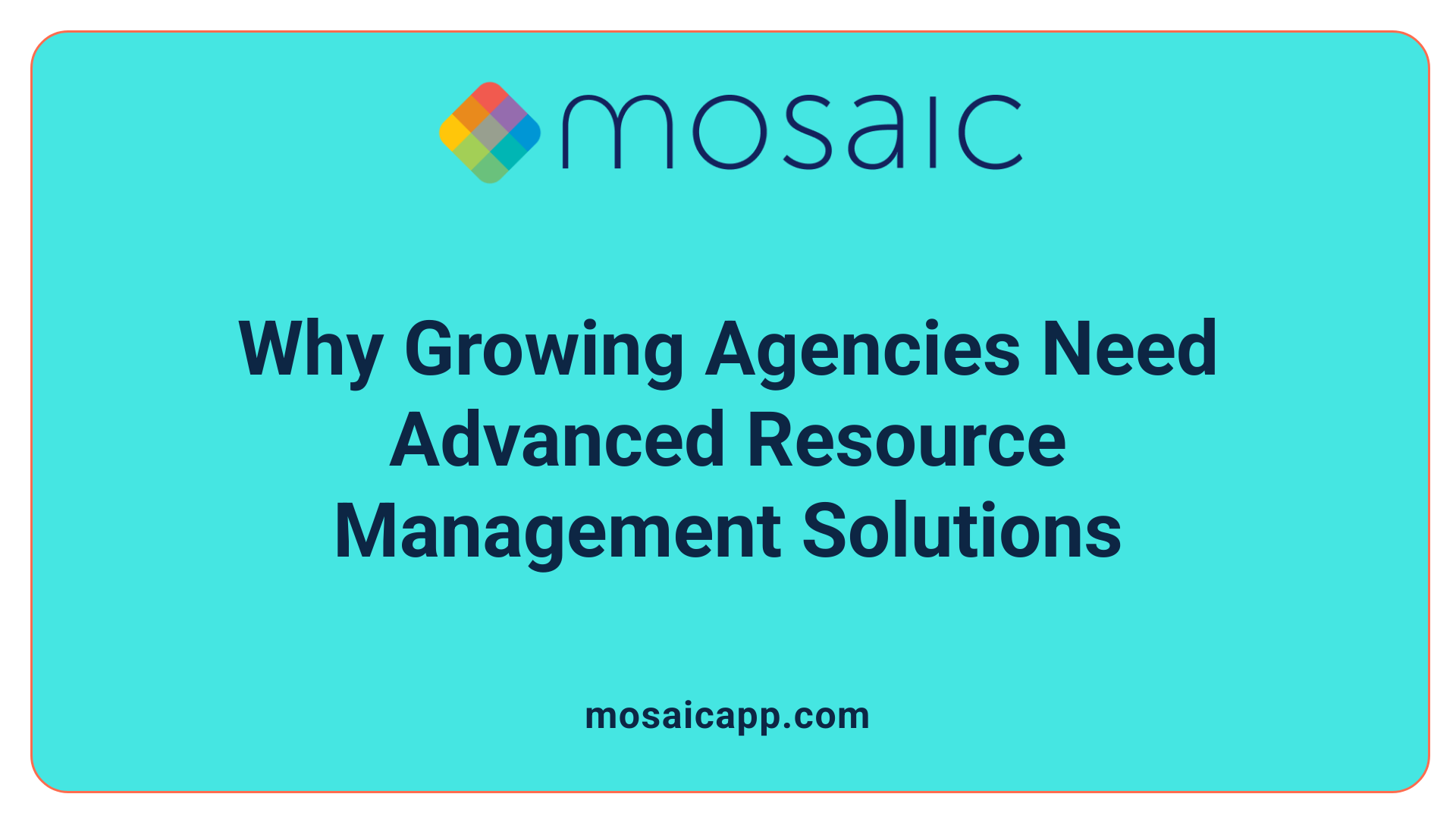
Why are spreadsheets insufficient for handling large and complex resource management needs?
Spreadsheets struggle to manage the demands of growing agencies due to their static nature and limited multi-user functionality. Handling large volumes of data or numerous users simultaneously is not their strength, leading to inefficiencies as organizations scale.
In matrix organizations, where resources are shared across departments, spreadsheets can cause confusion and conflicts like double bookings because they lack real-time visibility into resource allocations. This lack of centralized data exacerbates difficulties in coordinating across multiple teams and projects.
Managing resources in global settings further complicates reliance on spreadsheets. Agencies with resources spread across different locations face increased complexity, which spreadsheets cannot adequately support due to their limited collaboration, forecasting, and error prevention features.
Overall, spreadsheets do not provide the real-time, scalable, and collaborative capabilities required for effective resource management in large and complex agency environments. Agencies experience chaotic project management and resource allocation without dedicated tools designed for these growing demands.
Centralized Data and Enhanced Visibility: The Power of Dedicated Resource Management Tools
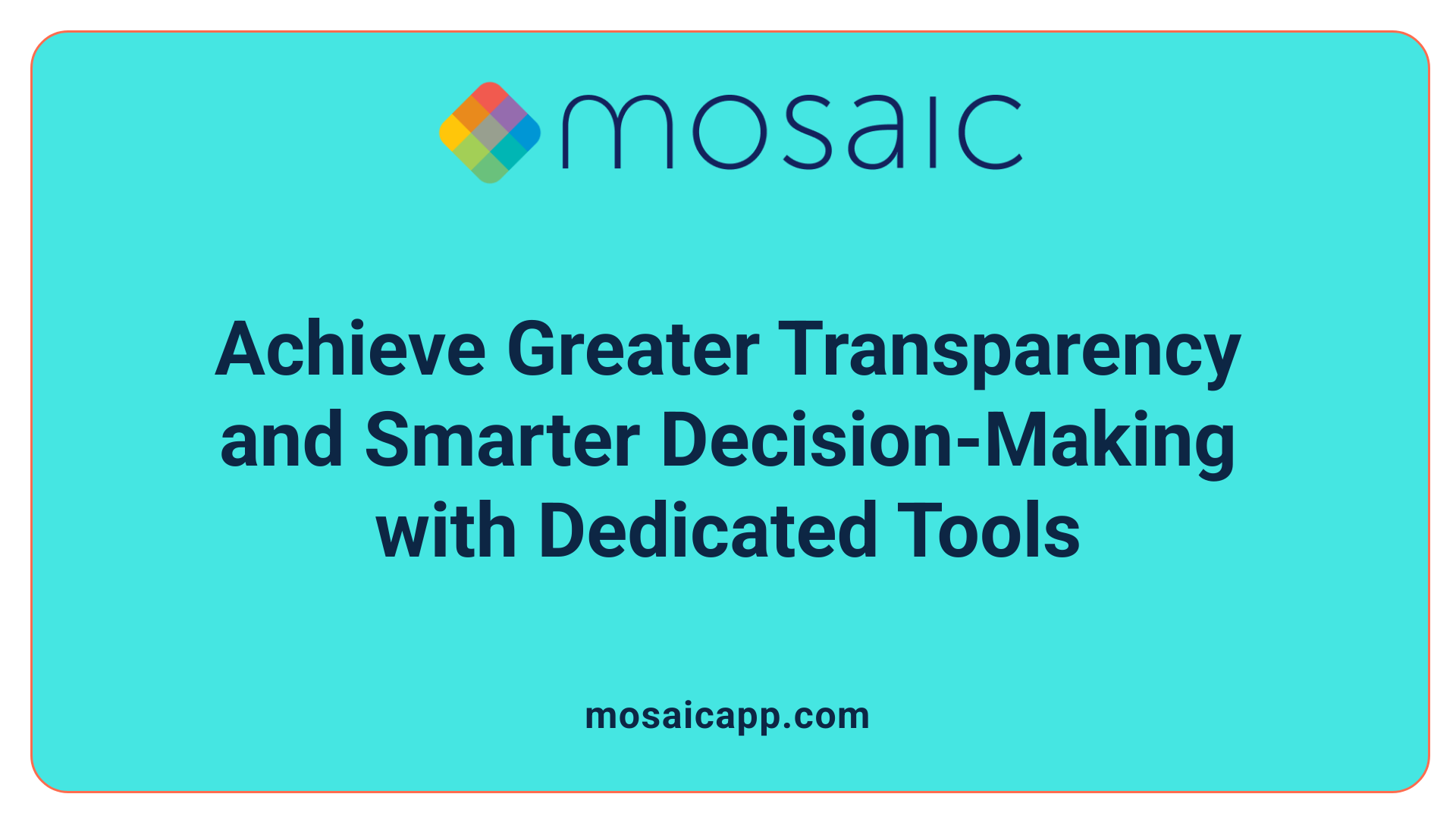
Centralized platforms for employee, skill, and project data
Dedicated resource management tools offer a unified platform where organizations can store and access comprehensive data about employees, their skills, project assignments, and timelines. This centralized repository replaces the fragmented and often inconsistent data storage found in multiple spreadsheets, ensuring that all relevant information is consolidated in one easily accessible location.
Improved visibility and decision-making
With centralized data, these specialized tools provide enhanced visibility into resource availability and project progress in real time. Managers gain a clear, holistic view of who is working on what and when, which helps avoid conflicts like double bookings or skill mismatches. This improved transparency supports more informed and strategic decision-making, leading to optimized resource allocation and more efficient project execution.
Integration with other software systems
Unlike isolated spreadsheets, dedicated resource management software integrates seamlessly with critical systems such as project management platforms and human resources software. This connectivity streamlines data flow across departments and tools, enabling workflows that are more efficient and less prone to manual errors or outdated information.
Avoidance of data silos
By connecting various systems and consolidating resource data, dedicated tools eliminate data silos—one of the biggest challenges with spreadsheets. Having a single source of truth reduces miscommunication and duplication of effort, fostering better collaboration across teams and ensuring that project and resource information remains consistent and up to date.
How do dedicated planning tools improve data management and visibility compared to spreadsheets?
Dedicated resource management software provides a centralized platform that aggregates data related to employees, skills, projects, and assignments. This centralization improves visibility into resource availability and project timelines across the organization. Unlike spreadsheets, these tools can integrate with project management and HR systems, reducing data silos and enhancing workflow efficiency, which leads to better informed decision-making.
Real-Time Collaboration and Automation: Overcoming Spreadsheet Limitations
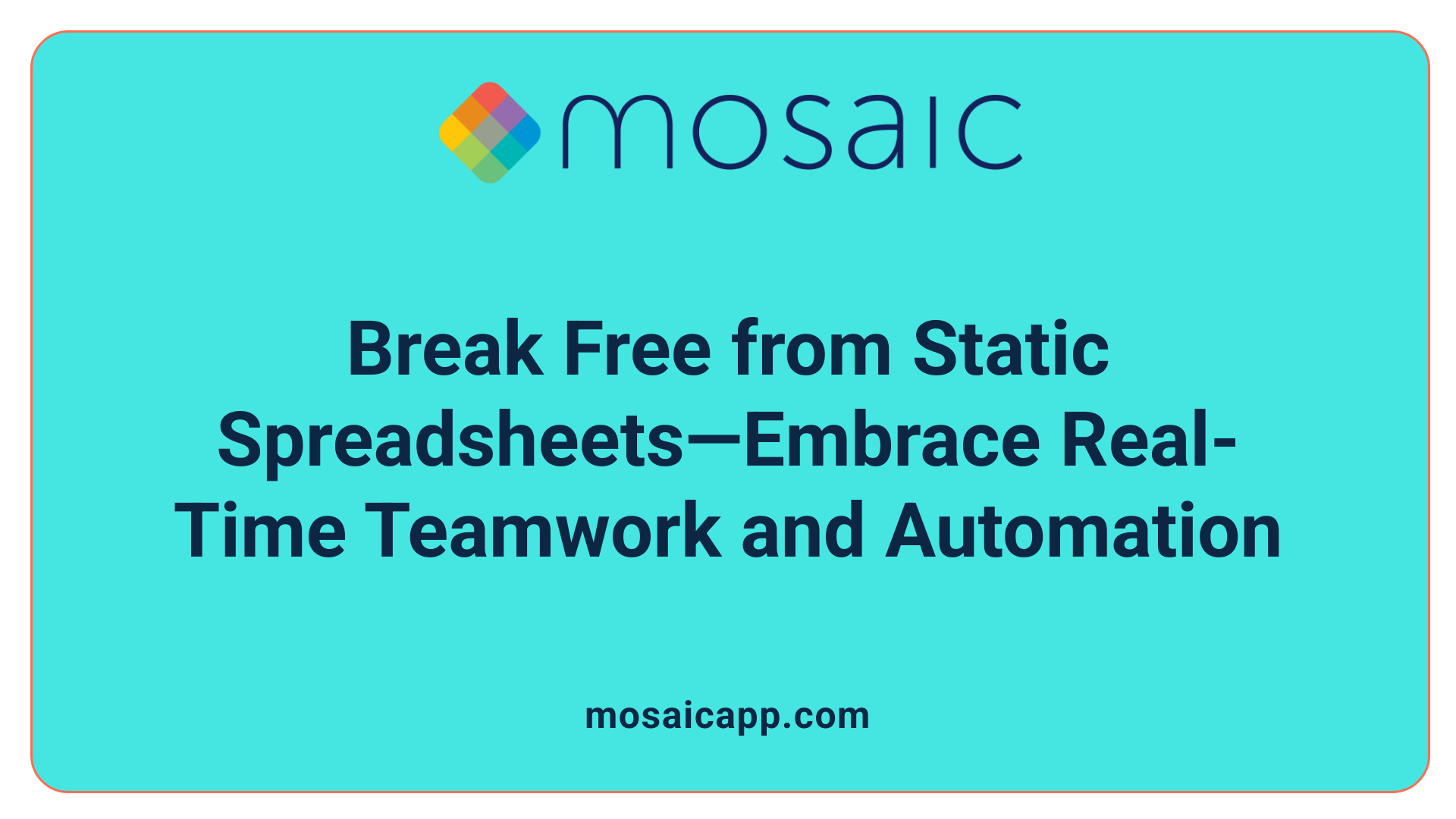
What collaboration and automation benefits do planning software offer over spreadsheets?
Resource planning software significantly improves collaboration by enabling multiple users to work simultaneously on the same data with real-time updates. This shared platform reduces the delays and miscommunication that often arise when teams rely on traditional spreadsheets, which lack concurrent editing and often lead to version control issues.
Automation is another transformative benefit of dedicated resource planning tools. These systems streamline repetitive tasks such as scheduling, reporting, and resource allocation, which in spreadsheets require manual input. Automation not only saves valuable time but also eliminates human errors that can cause project delays and inaccuracies.
Unlike static spreadsheets that demand manual data entry prone to mistakes, resource planning software ensures data integrity by automatically updating information and triggering notifications. This reduces the risk of resource misallocation and keeps project timelines on track.
In summary, real-time collaboration features combined with smart automation in resource planning software overcome the fundamental limitations of spreadsheets, enabling teams to communicate effectively, reduce errors, and enhance project success rates.
Advanced Forecasting and Analytics: Unlocking Intelligent Resource Management
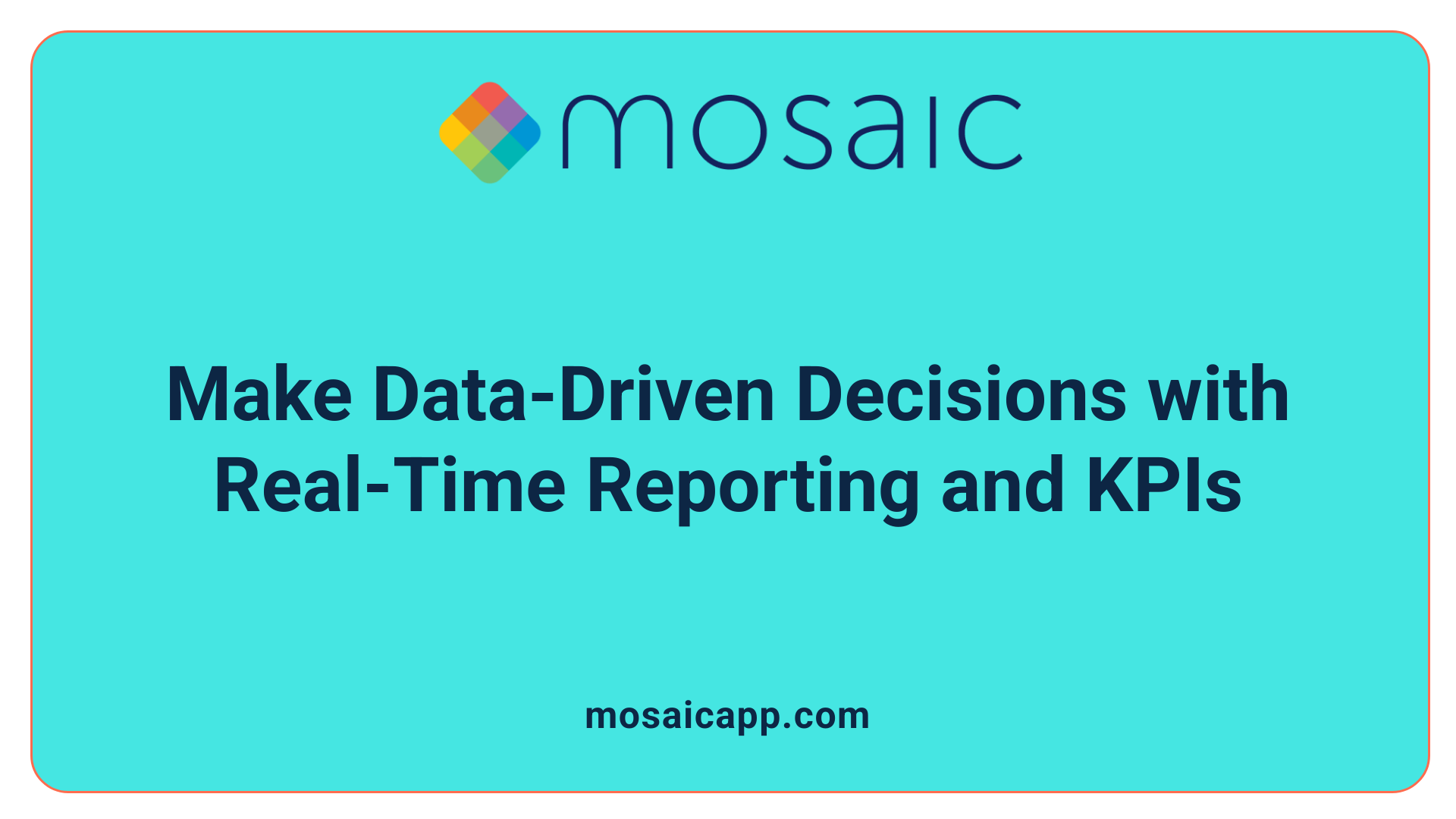
Why is advanced forecasting and analytics important, and how do planning tools provide this?
Advanced forecasting plays a crucial role in effective resource management by enabling organizations to anticipate capacity needs and avoid last-minute shortages or excess resources. Unlike static spreadsheets, which lack forecasting features and real-time reporting, dedicated planning tools offer a dynamic approach to resource planning.
Forecasting capabilities absent in spreadsheets
Spreadsheets are limited by their inability to support resource forecasting. This shortfall means organizations cannot accurately predict future resource demands or adjust their plans proactively. Without forecasting, agencies risk misallocating resources, leading to project delays or inefficiencies.
Real-time reporting, dashboards, and KPI tracking
Modern resource management software provides comprehensive reporting features, including real-time dashboards and KPI tracking. These tools present up-to-date metrics on resource availability, project timelines, and progress, empowering managers with transparent insights. This visibility helps prevent overallocation and missed deadlines.
Analytics-driven insights for resource utilization and project performance
Built-in analytics offer deeper understanding of how resources are utilized and projects are performing. By evaluating key performance indicators and trends, organizations can identify bottlenecks and opportunities for improvement. This data-driven approach facilitates smarter decision-making and enhances the efficiency of resource allocation.
Through these advanced forecasting and analytics capabilities, resource management software enables organizations to manage complexity, improve productivity, and ensure timely project delivery.
Security and Compliance: Protecting Sensitive Agency Data
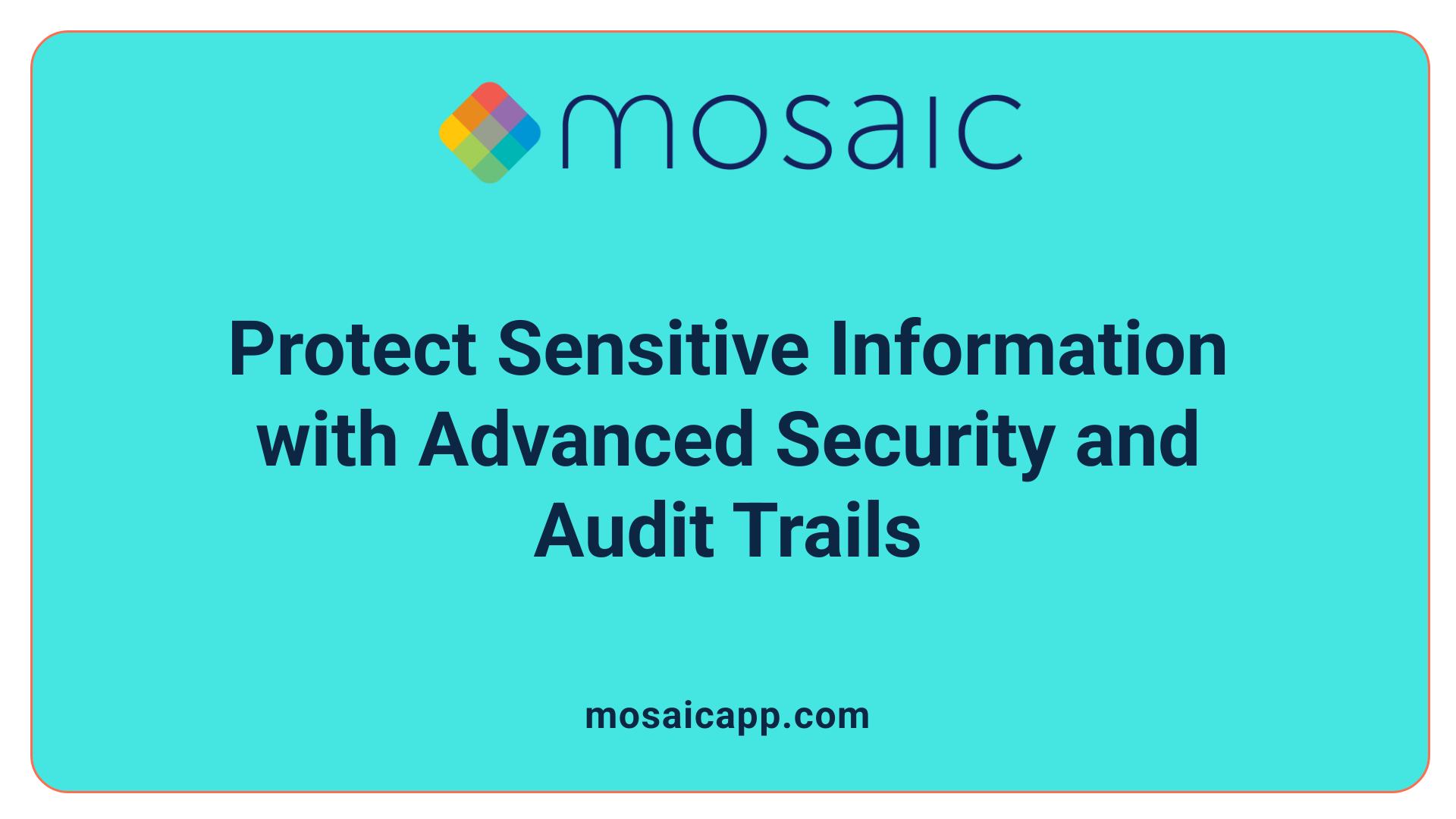
How do resource planning tools enhance data security compared to spreadsheets?
Resource planning software significantly improves data security over traditional spreadsheets by implementing robust security features designed for sensitive information protection. These tools include role-based access controls, which ensure that only authorized personnel can view or modify certain data, minimizing unauthorized access risks.
Data encryption is another critical feature embedded in resource management tools. It secures information both in transit and at rest, protecting it from potential interception or breaches. Additionally, audit trails are maintained, providing detailed logs of data access and modifications. This transparency supports compliance with regulatory standards and enables tracing any issues back to their source.
In contrast, spreadsheets offer limited security capabilities. They typically lack sophisticated access controls, making sensitive project and resource data vulnerable to breaches or unauthorized editing. The absence of encryption and audit trails further exposes information to risks and complicates compliance efforts.
By utilizing dedicated resource planning software with advanced security frameworks, organizations can protect their critical data more effectively while ensuring adherence to compliance requirements. This leads to reduced risk of data loss, privacy breaches, and costly regulatory penalties, fostering trust and operational integrity within agencies.
Customization and Flexibility: Tailoring Solutions to Agency Needs
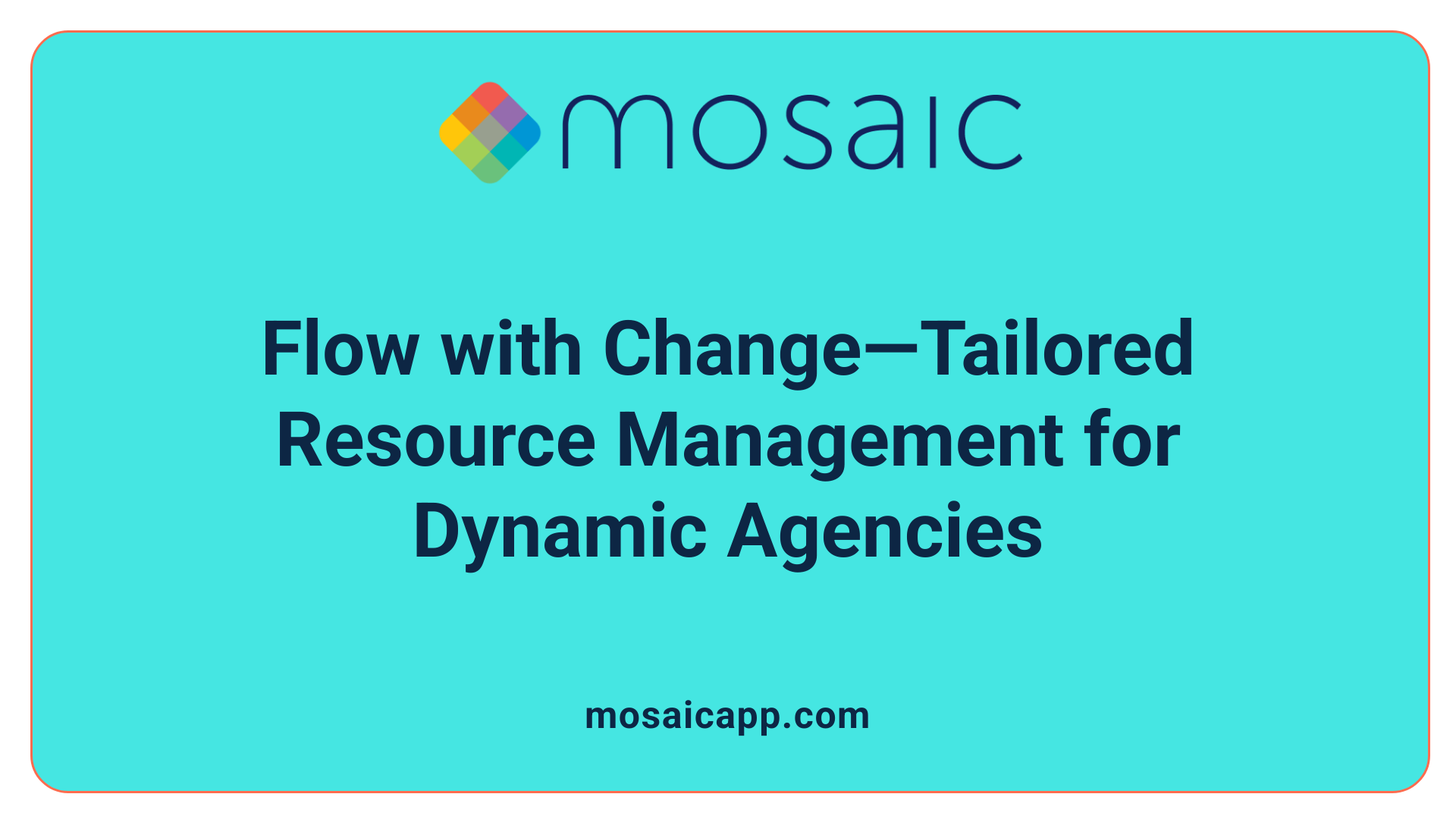
What customization advantages do dedicated planning tools have over spreadsheets?
Dedicated planning tools provide substantial customization options that spreadsheets simply cannot offer. Unlike static spreadsheets, these planning software platforms allow agencies to tailor features, workflows, and data views to their unique business processes. This high degree of configurability ensures resource management can evolve seamlessly alongside changing organizational needs.
Greater customization options in planning software
Planning software supports flexible configurations such as custom fields, role-based access controls, and tailored dashboards. This means agencies can focus on the data and metrics most relevant to their specific projects and resource management strategies. Custom automation rules and specialized scheduling tools further enhance operational efficiency.
Flexibility to adapt workflows and changing business processes
Because business environments constantly evolve, resource management solutions must support continuous updates to workflows. Planning software enables quick adjustments without losing data integrity. This responsiveness facilitates agile project execution and smooth handling of changes, unlike spreadsheets where modifications can be cumbersome and error-prone.
Support for continuous dynamic planning
Modern planning tools promote ongoing, dynamic planning by continuously linking strategic goals with day-to-day operations. Real-time data updates and embedded analytics help agencies monitor progress, anticipate resource bottlenecks, and make informed decisions rapidly. This dynamic approach is essential for thriving in fast-paced, complex environments.
In contrast, spreadsheets are limited by their static and manual nature, which restricts flexibility and complicates data accuracy and collaboration.
| Feature | Planning Software | Spreadsheets |
|---|---|---|
| Customization | Extensive (fields, workflows, automation) | Minimal (static cells, formulas) |
| Flexibility | High (adapts to changing processes seamlessly) | Low (difficult to update and maintain) |
| Continuous Dynamic Plan | Fully supported with real-time data and analytics | Not supported, manual and static |
| Collaboration | Real-time multi-user collaboration | Limited, prone to version issues |
| Automation | Schedules, notifications, resource allocation automated | Manual data entry and updates |
Driving Project Success: Improving Productivity and Reducing Delays
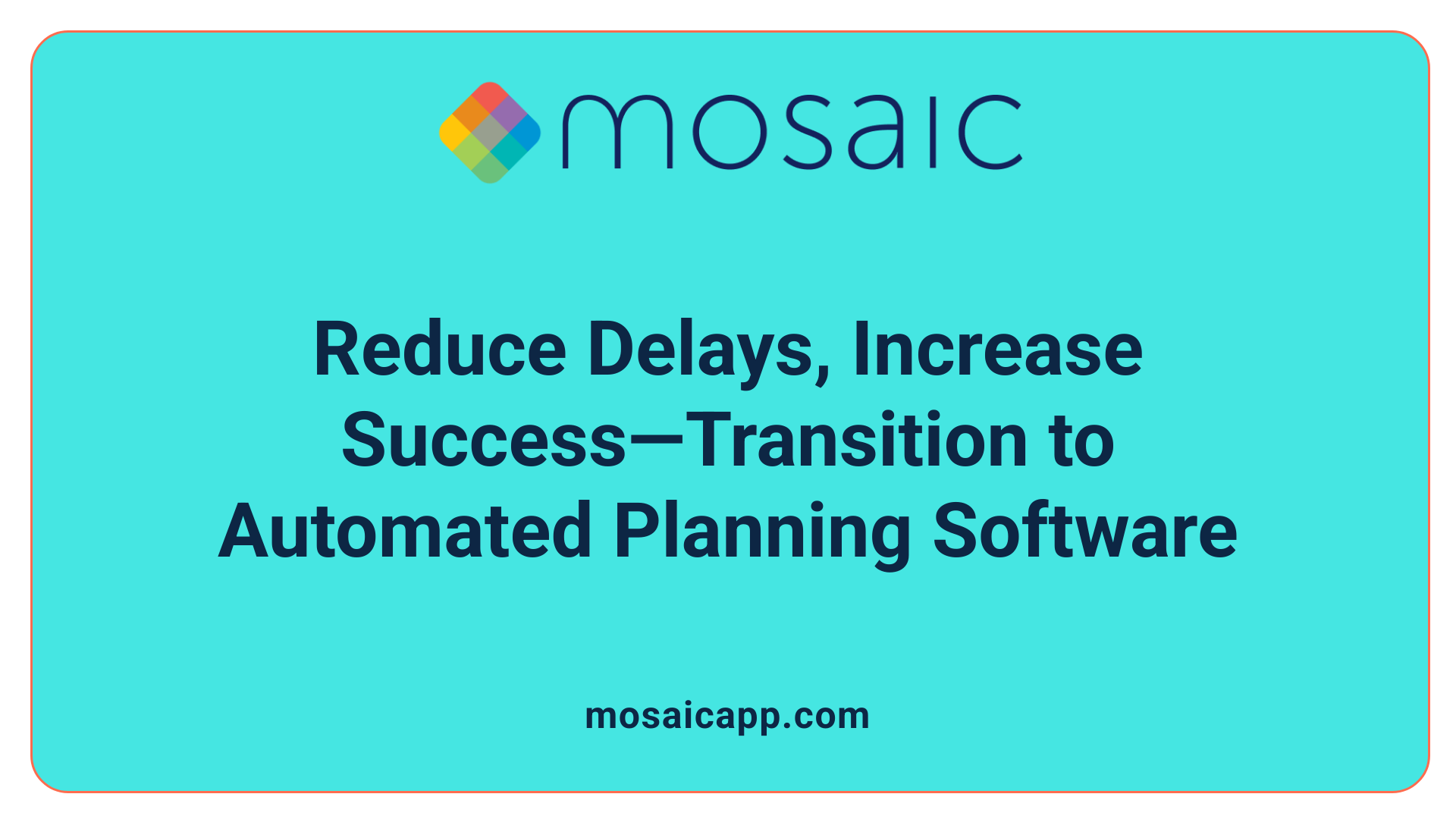
How does switching to planning software impact project outcomes compared to spreadsheets?
Teams that rely on spreadsheets for project tracking are three times more likely to face delays. This is often due to human errors, miscommunication, and the lack of automation features within spreadsheets. In contrast, switching to dedicated project management software delivers tangible benefits.
Impact of spreadsheets on project delays and inaccuracies
Spreadsheets require manual data entry, which can lead to mistakes affecting project timelines and accuracy. They lack real-time collaboration capabilities, causing data silos and version control problems. Without task automation, teams spend excessive time on repetitive updates and scheduling, increasing the chance of project delays.
Increased productivity and project success rates with software adoption
Upgrading to resource management software results in a 30% boost in team productivity and a 25% rise in project success rates. These tools offer centralized dashboards and real-time updates that enhance visibility and coordination across teams, enabling more efficient decision-making and resource allocation.
Reduction in human errors and improved task automation
Automation features in project management software streamline repetitive tasks such as scheduling, notifications, and reporting. This reduces human errors and frees team members to focus on strategic activities. Real-time collaboration eliminates miscommunication, accelerating project progress and ensuring deadlines are met.
Overall, transitioning from spreadsheets to dedicated project management software substantially improves project outcomes by enhancing accuracy, boosting productivity, and minimizing delays.
Enhancing Resource Utilization and Profitability through Modern Tools
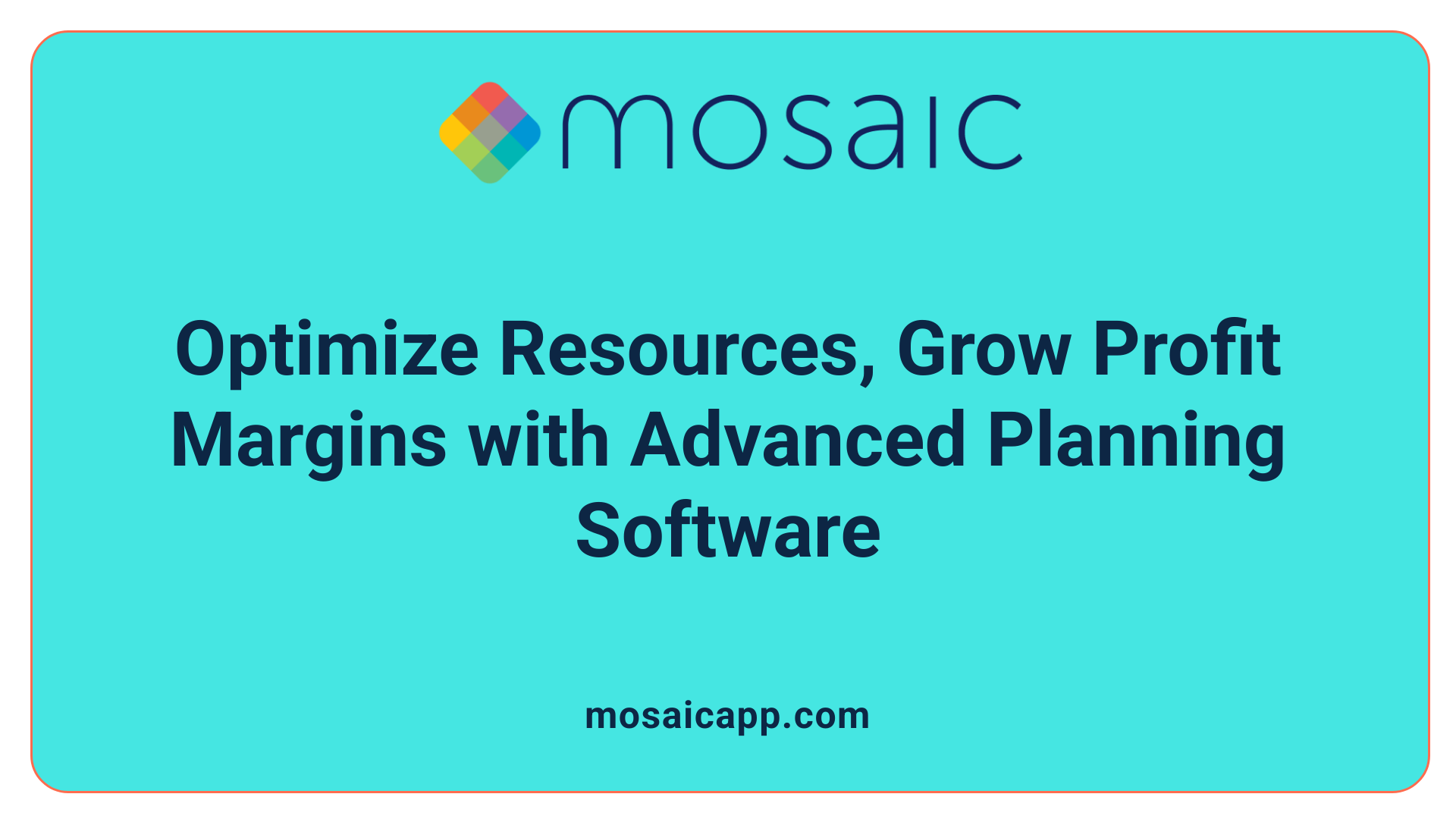
How do modern resource planning tools support agencies in maximizing profitability?
Efficient resource allocation is crucial for maximizing agency profitability. Modern resource planning tools offer a centralized platform that provides real-time visibility into resource availability, employee skills, and project timelines. This centralized approach prevents overallocation of personnel and equipment, which can lead to burnout, missed deadlines, and increased costs.
These tools also improve forecasting and capacity planning, allowing agencies to allocate the right resources to the right projects at the right time. By avoiding overbooking and ensuring optimal use of resources, agencies reduce waste and enhance operational efficiency.
Avoiding overallocation and missed deadlines
Modern tools facilitate real-time collaboration and automate scheduling, helping teams avoid conflicting assignments and double bookings common with spreadsheets. Project managers can quickly adjust allocations based on current workloads and project priorities, reducing the risk of missed deadlines.
The integration with other systems and automation of repetitive tasks further streamline workflows, improving responsiveness and adaptability. This agility ensures projects stay on track and resources are used where they generate the most value.
Benefits of timely project delivery and budget adherence
Timely delivery within budget directly impacts an agency’s bottom line by increasing client satisfaction and encouraging repeat business and referrals. Proper resource utilization reduces costly delays and rework, enabling projects to meet deadlines and financial targets consistently.
Moreover, real-time reporting and analytics give actionable insights into project performance, helping managers identify cost-saving opportunities and areas of improvement. This continuous monitoring supports strategic decision-making that enhances long-term profitability.
In summary, modern resource planning software empowers agencies to manage complex projects efficiently, avoid common pitfalls of traditional spreadsheet use, and drive sustained profitability through better resource utilization.
Future-Proofing Agency Planning: Embracing Real-Time, Integrated Solutions
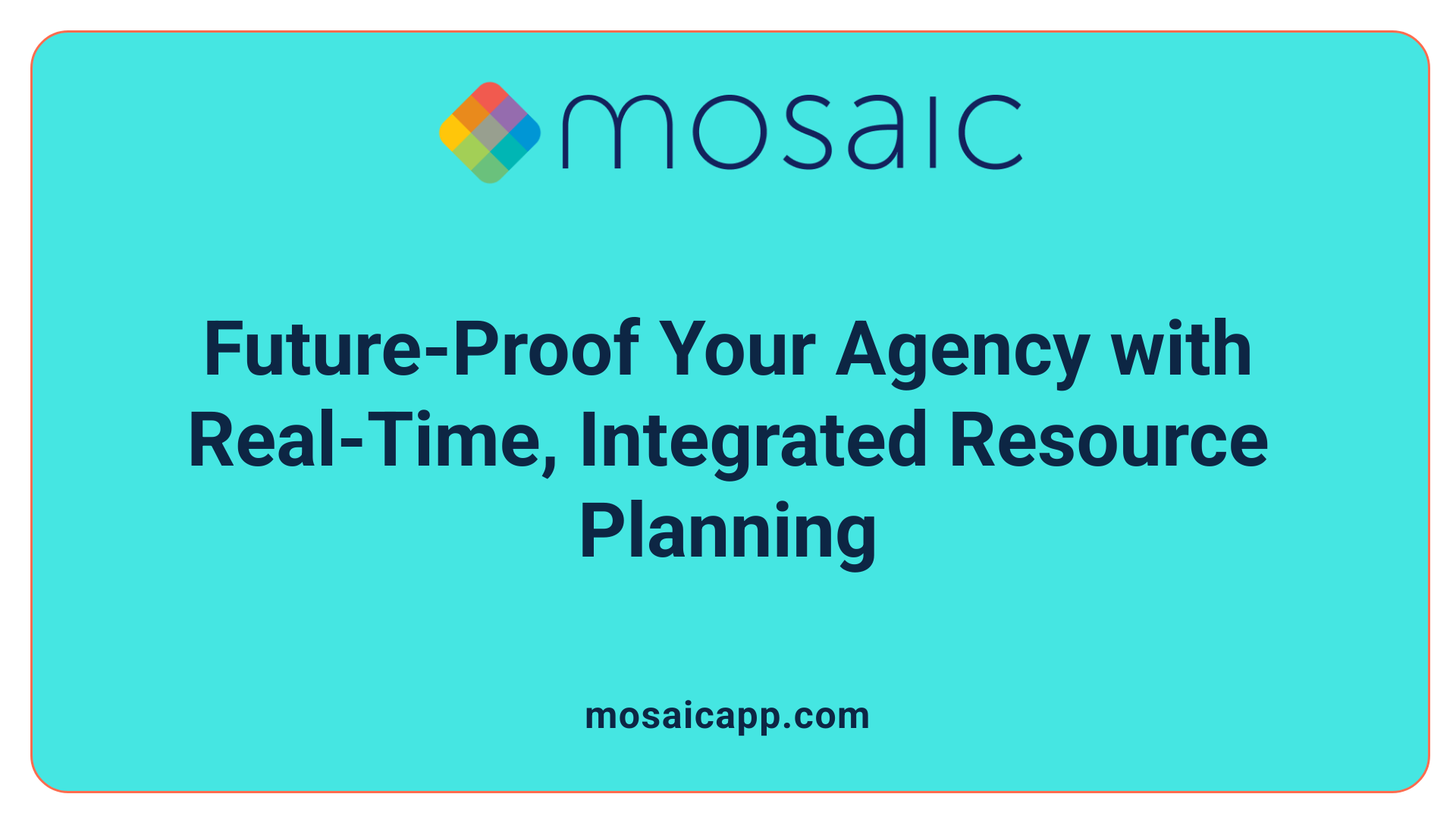
How does adopting dedicated planning software future-proof agency resource management?
Resource planning has evolved far beyond simple allocations and schedules. Today, agencies face complexities like forecasting demand, capacity planning, and optimizing resources across global and matrixed teams. Traditional tools such as spreadsheets lack the real-time accuracy, collaboration capabilities, and advanced analytics needed to manage these growing challenges.
Dedicated resource planning software addresses these needs by providing a centralized platform that continuously links strategy, planning, and execution. Real-time data updates and built-in analytics empower agencies to monitor project progress instantly and assess resource utilization effectively. This unified view helps teams model trade-offs in resource allocation and adjust priorities dynamically as market conditions or internal factors change.
Moreover, these solutions support agile workflows by enabling swift strategy pivots through scenario planning tools and integrated performance measurement. This continuous, dynamic planning approach ensures agencies stay competitive, avoid costly delays, and respond quickly to disruption. By moving away from error-prone, static spreadsheets, agencies gain a future-proof resource management system that supports scalability and resilience in an ever-evolving landscape.
Embracing Planning Software: A Strategic Move for Agencies
The transition from spreadsheets to dedicated planning software represents a strategic evolution for agencies seeking greater efficiency, accuracy, and scalability in resource and project management. By overcoming the inherent limitations of spreadsheets—such as error vulnerability, poor collaboration, and static data—planning software empowers agencies with real-time visibility, advanced forecasting, robust security, and automation. These advantages translate to improved project outcomes, enhanced profitability, and agility in an increasingly complex and competitive environment. Agencies embracing such technology position themselves not only to meet today’s demands but to future-proof their growth and success.
References
- 8 Reasons to Move From Spreadsheets to Resource ...
- 6 Reasons to rethink Spreadsheets for Project Resource ...
- 7 Reasons Why You Shouldn't Use Excel for Resource ...
- Transition from Spreadsheets to Project Management ...
- Strategic Planning Software: Moving Beyond Spreadsheets
- Move From Spreadsheet to a Modern Resource Planning ...


